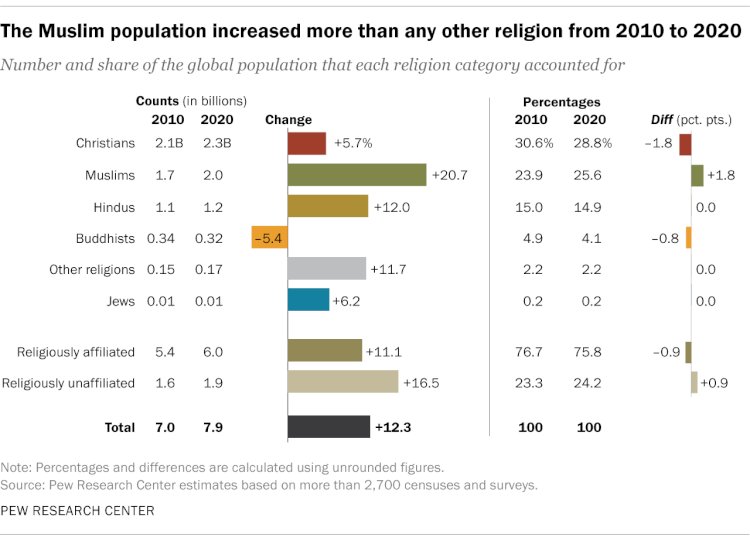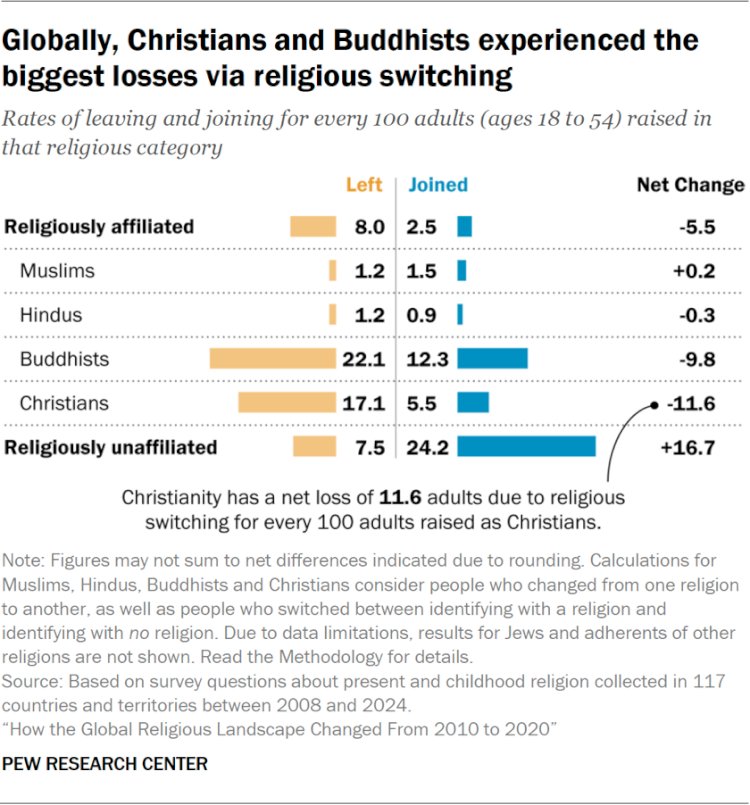Islam Emerges as the Fastest-Growing Religion in the World: Pew Study Reveals
In a sweeping new study from the Pew Research Center, Islam has been identified as the fastest-growing religion in the world during the decade spanning from 2010 to 2020. The report, based on data from 198 countries and territories, underscores how demographic momentum—particularly fertility and youth—continues to drive the religious landscape globally.
The findings offer critical insights into the changing religious composition of the world, highlighting Islam’s steady rise, the decline of Christianity's global share, and the surge of the religiously unaffiliated, particularly in Western societies.
Between 2010 and 2020, the global Muslim population grew by 347 million people, reaching approximately 2.0 billion. This rise pushed Islam’s share of the world population from 23.9% to 25.6%, making it the fastest-growing major religion of the decade.

“This growth is not due to conversion but rather the young median age and higher fertility rate among Muslims,” the Pew report noted.
By comparison, the global Christian population increased by 122 million, but their proportion dropped from 30.6% to 28.8%—a relative decline due to slower growth rates and significant switching out of Christianity in Europe and North America.
The religiously unaffiliated—those identifying as atheist, agnostic, or “nothing in particular”—grew by 270 million, accounting for 24.2% of the global population by 2020.
Perhaps the most intriguing aspect of the Pew study involves religious switching—the movement of individuals into or out of religious affiliations between ages 15 and 54.
- The unaffiliated recorded the largest net gain from switching, adding +16.7 people per 100 adults in this age group.
- Christianity experienced a net loss of 11.6 per 100—the most significant decline among all religious groups.
- Buddhists also saw a net loss of –9.8 per 100.
- In contrast, Muslims and Hindus recorded almost no net change, suggesting that their growth is driven largely by natural increase, not conversion.

These trends illustrate a key global pattern: conversion is not the main engine of religious growth for most major faiths, and switching away from religion—especially Christianity—is rapidly reshaping the religious composition in the West.
At the end of the decade, Christianity remained the world’s largest religion at 28.8%, followed closely by Islam at 25.6%. However, projections indicate that if current trends persist, Islam could surpass Christianity later in the 21st century.
The religiously unaffiliated now comprise nearly a quarter of the world’s population. Meanwhile, Hindus held steady at around 14.9%, with most of their population concentrated in South Asia. Buddhists, after experiencing a population decline of about 19 million, now account for just over 4.1%, and Jews, despite modest growth, represent about 0.2% globally.
???? Summary of Key Data
|
Religion |
Growth (2010–2020) |
2020 Global Share |
Net Switching per 100 Adults (18–54) |
|
Muslims |
+347 million |
25.6% |
±0 |
|
Unaffiliated |
+270 million |
24.2% |
+16.7 |
|
Christians |
+122 million |
28.8% |
–11.6 |
|
Hindus |
+126 million |
14.9% |
±0 |
|
Buddhists |
–19 million |
4.1% |
–9.8 |
|
Jews |
+1 million |
0.2% |
Not Significant |
Disclaimer
The views expressed in this article are the author’s own and do not necessarily mirror Islamonweb’s editorial stance.
























Leave A Comment